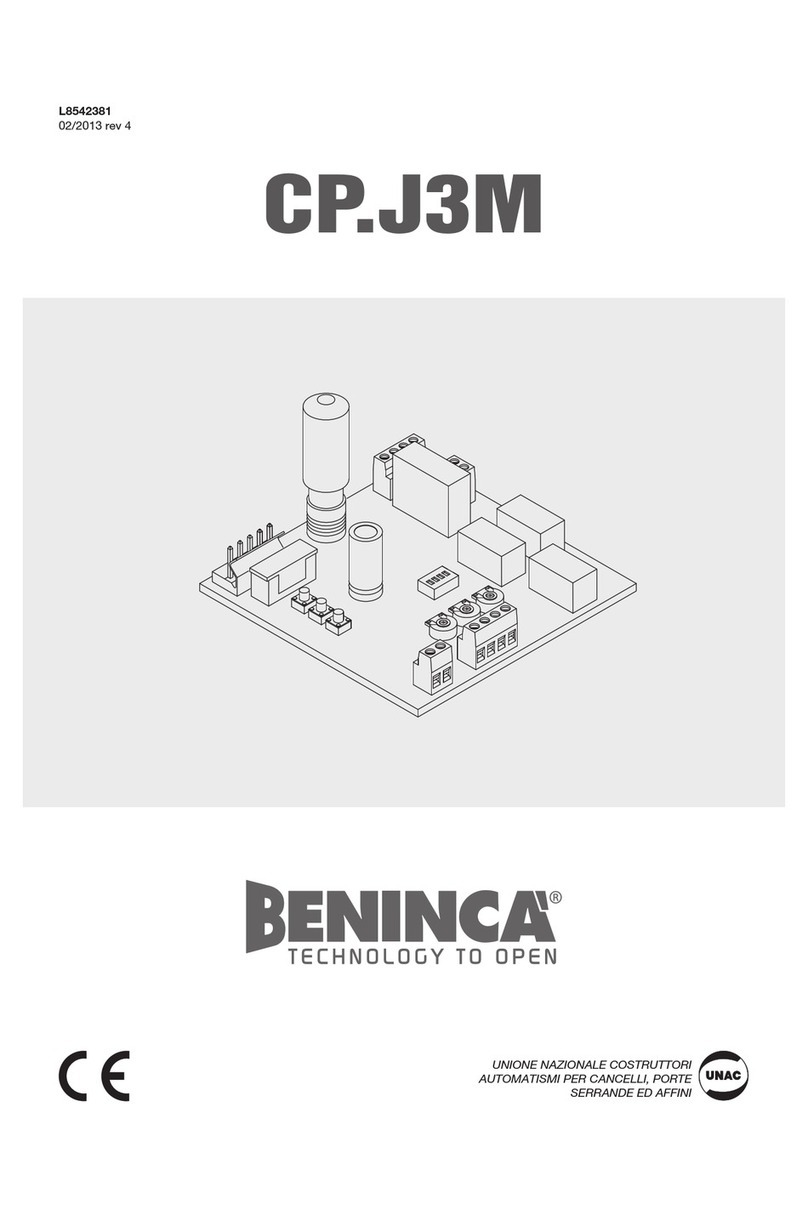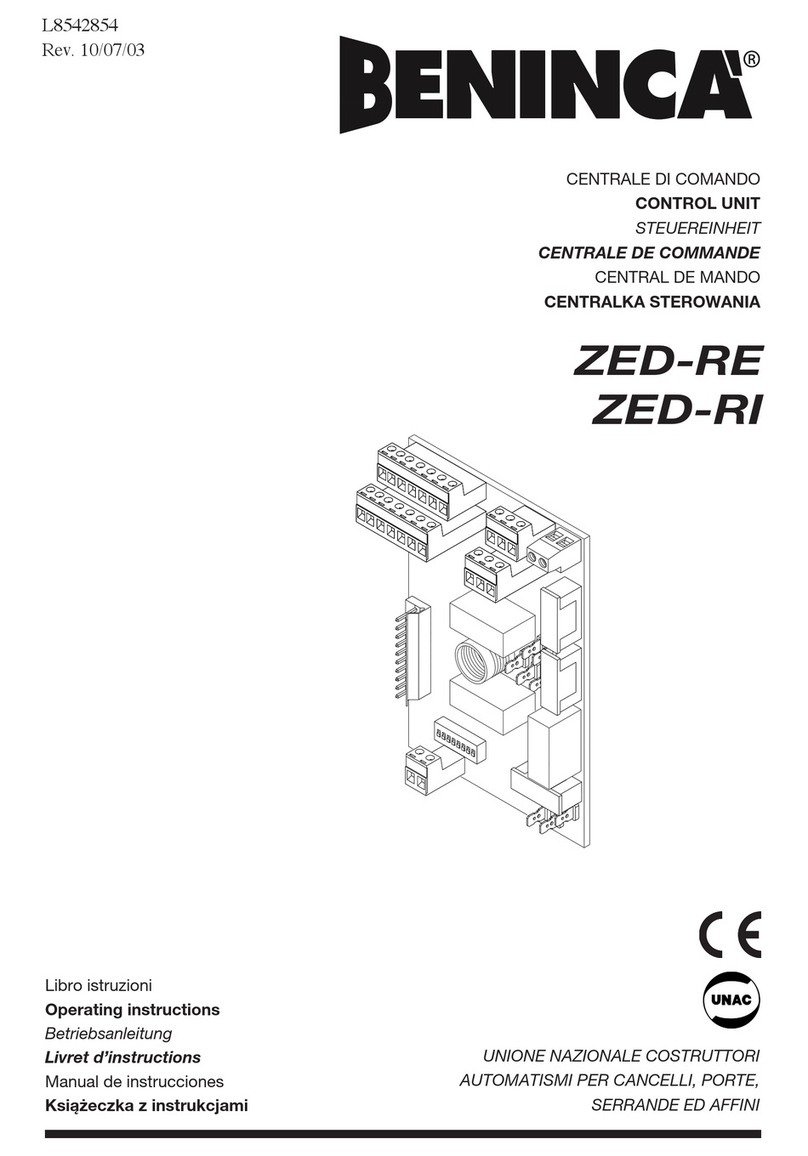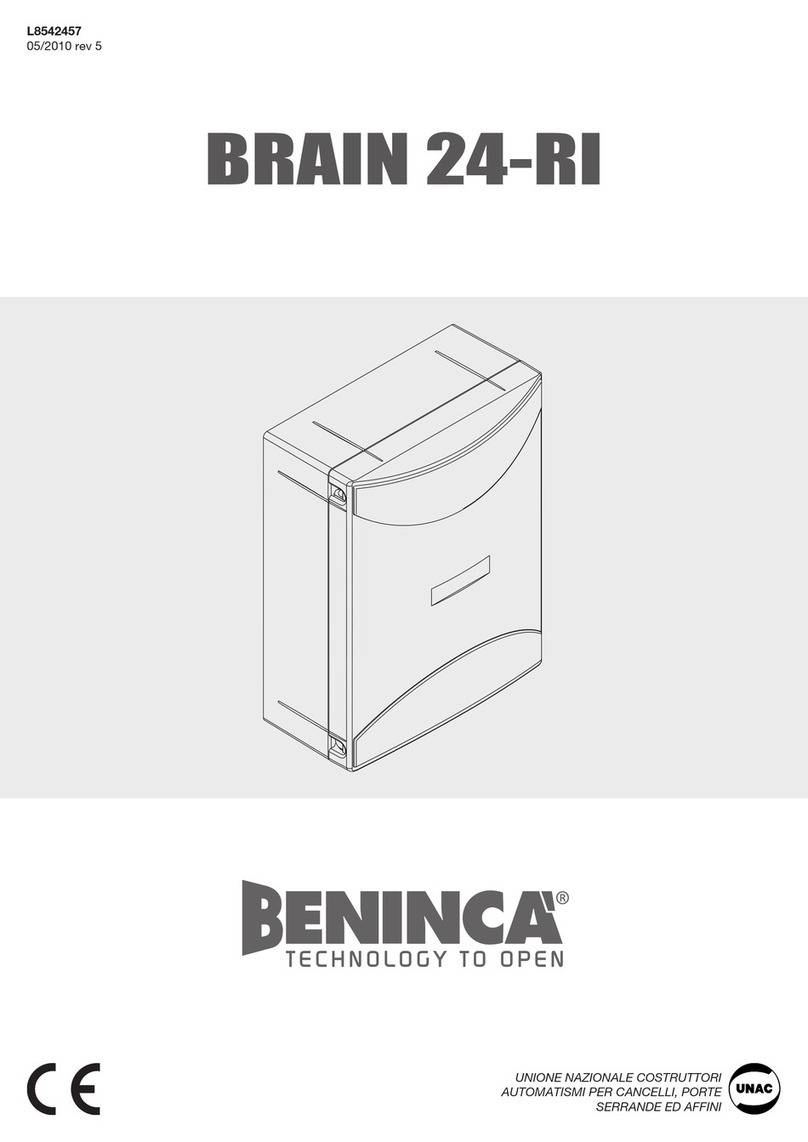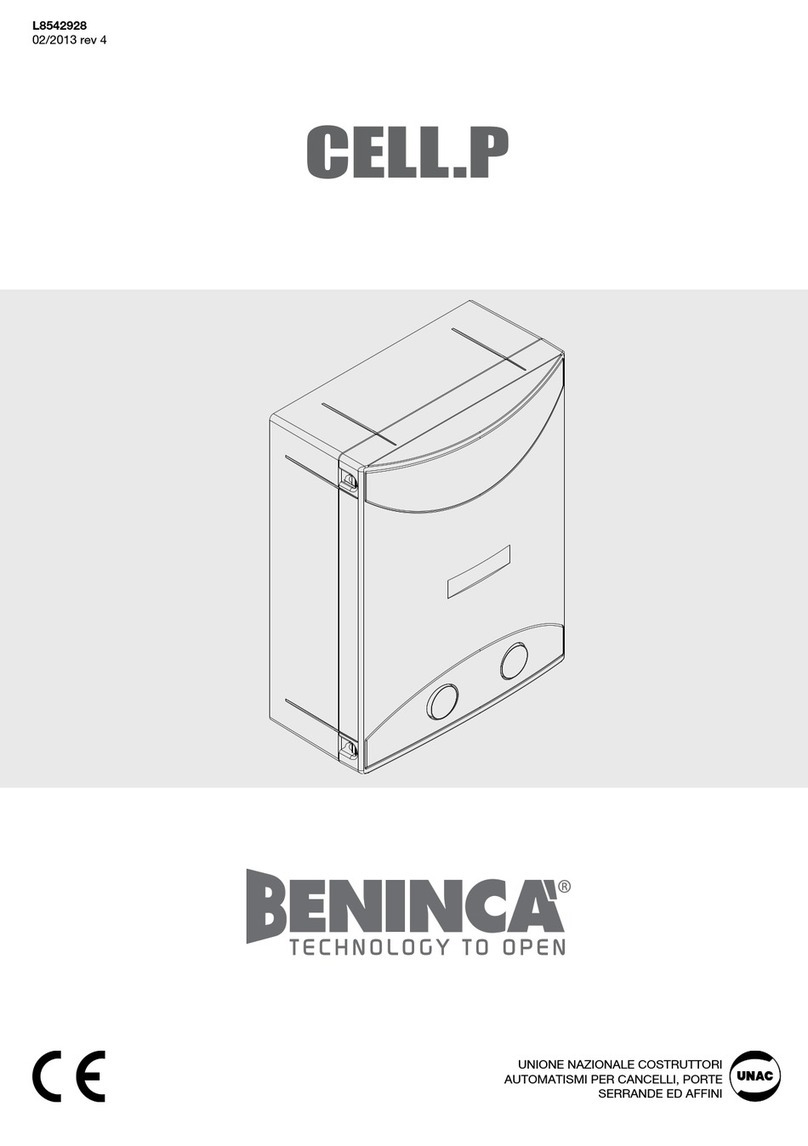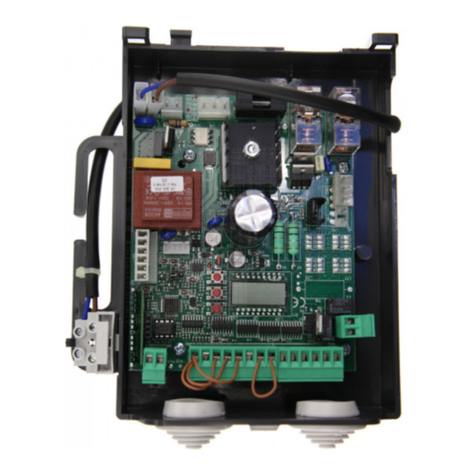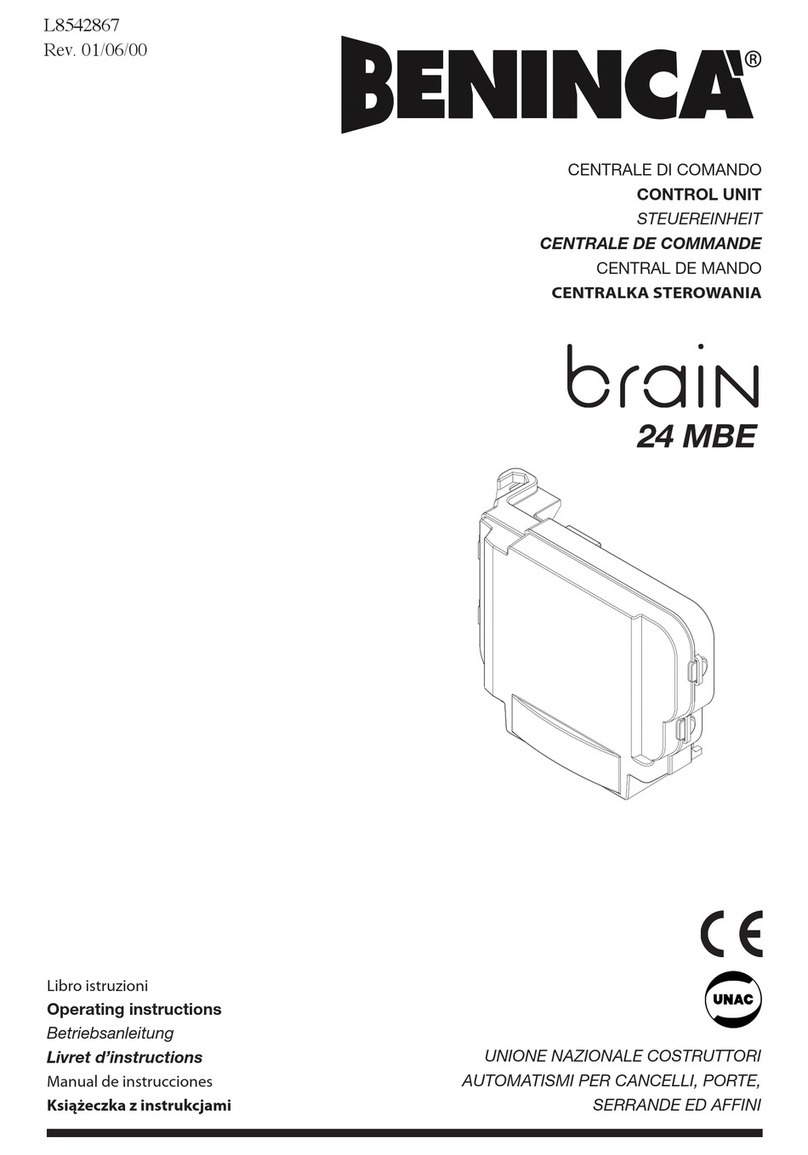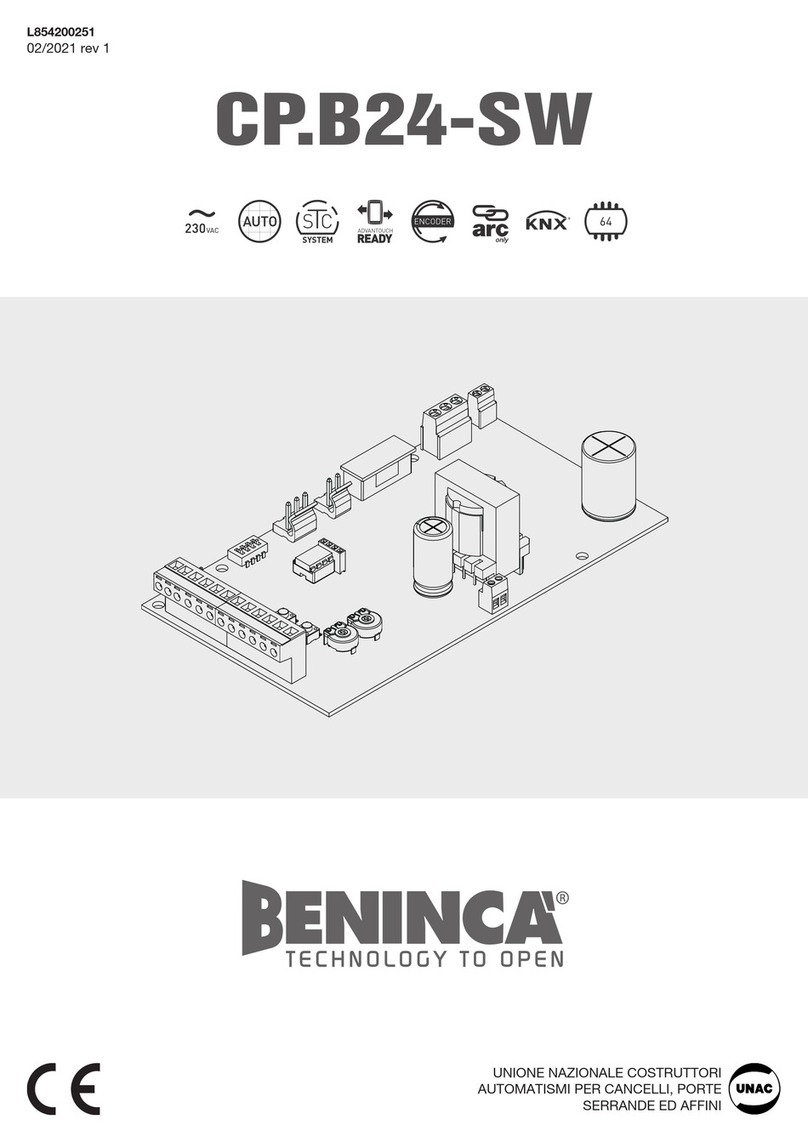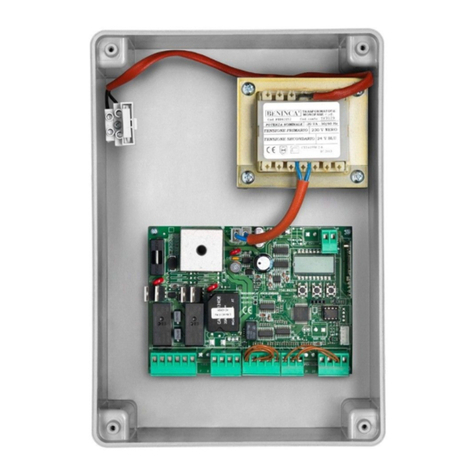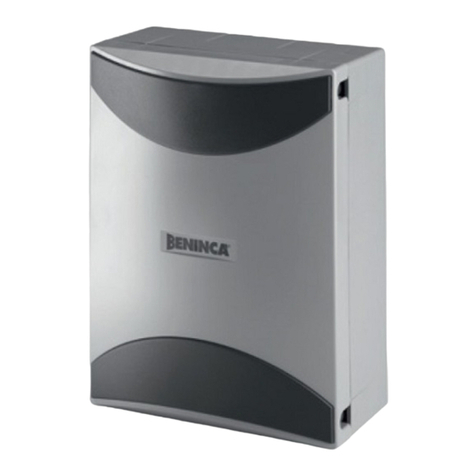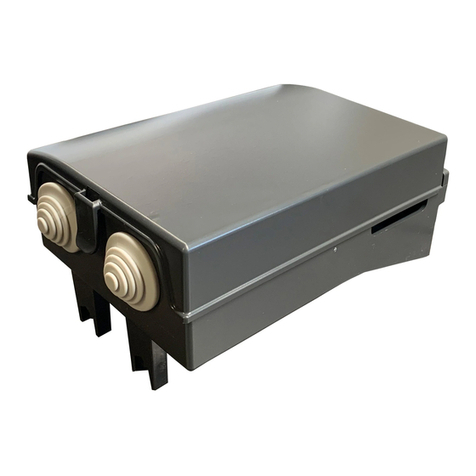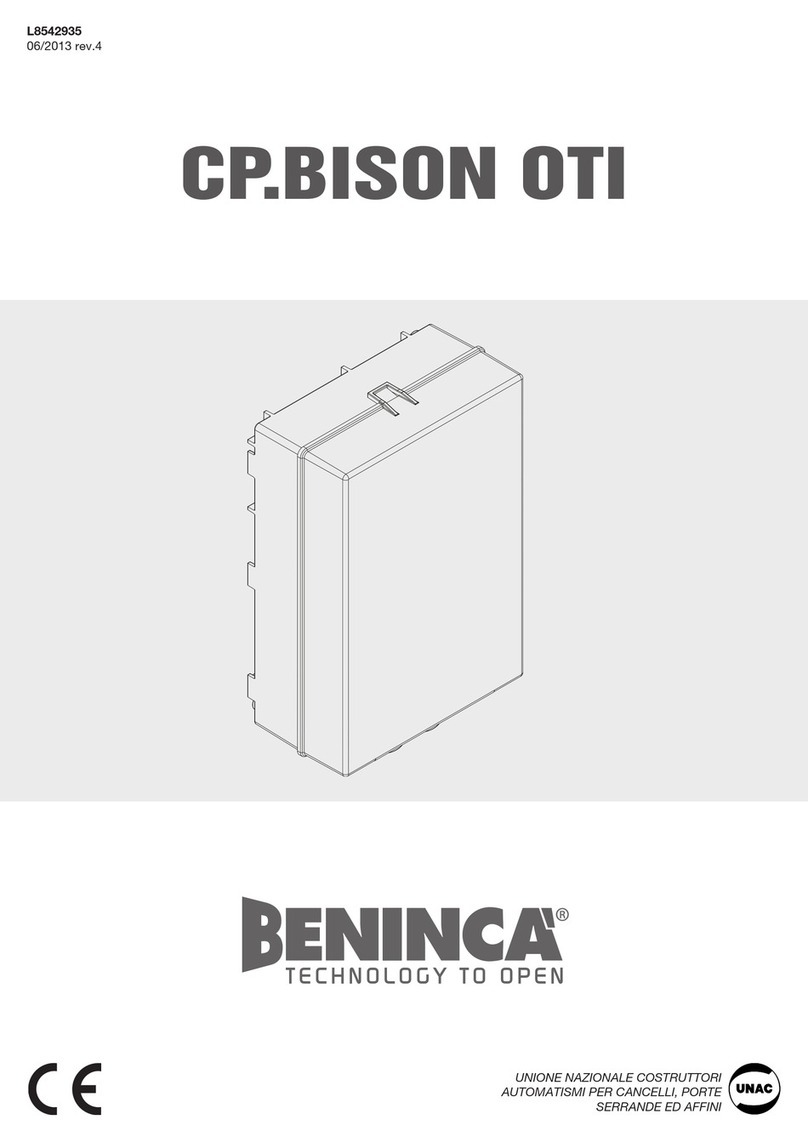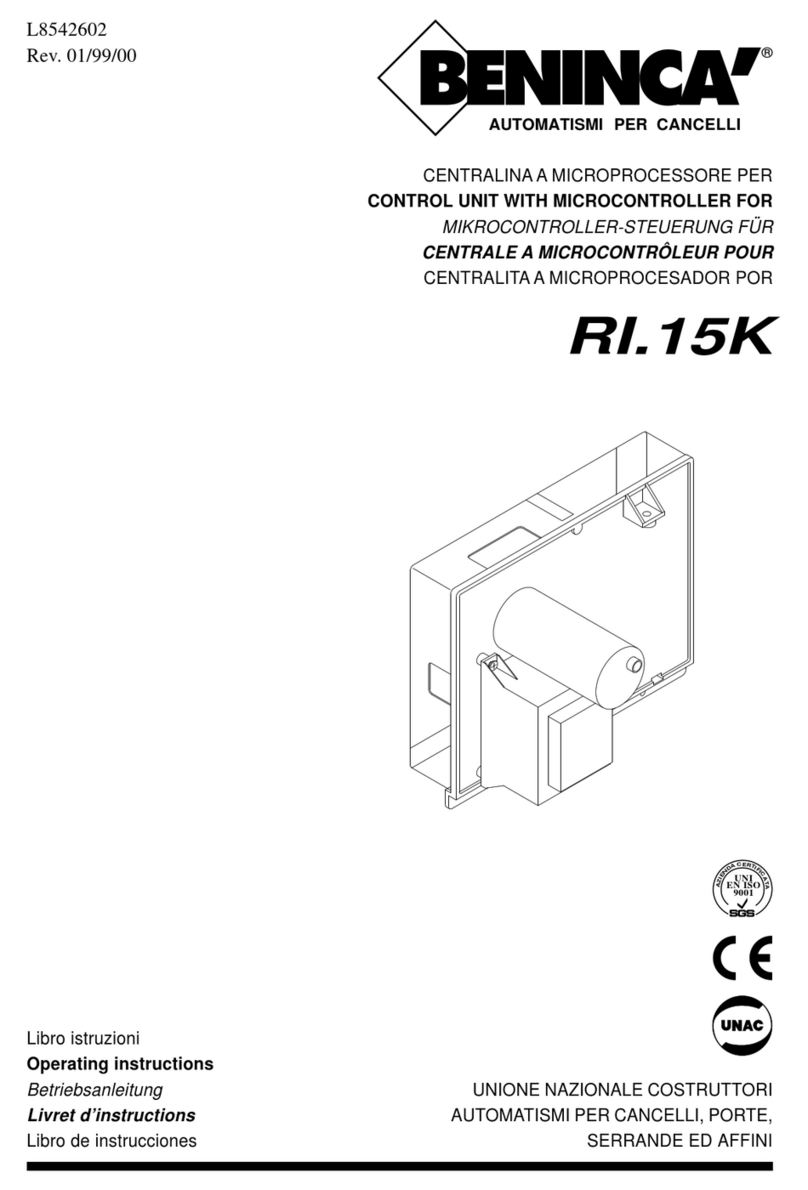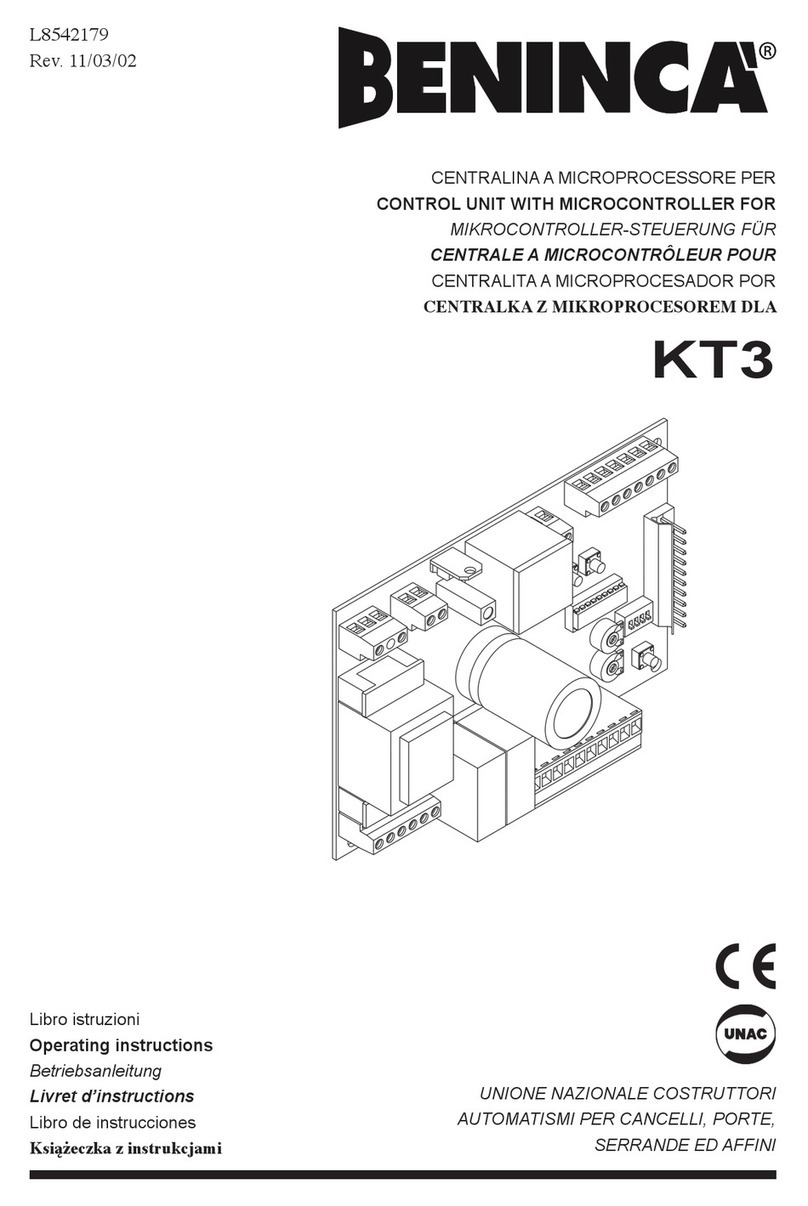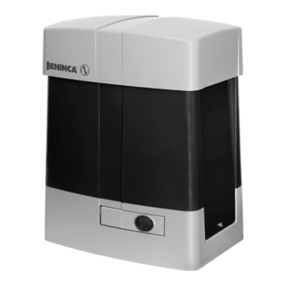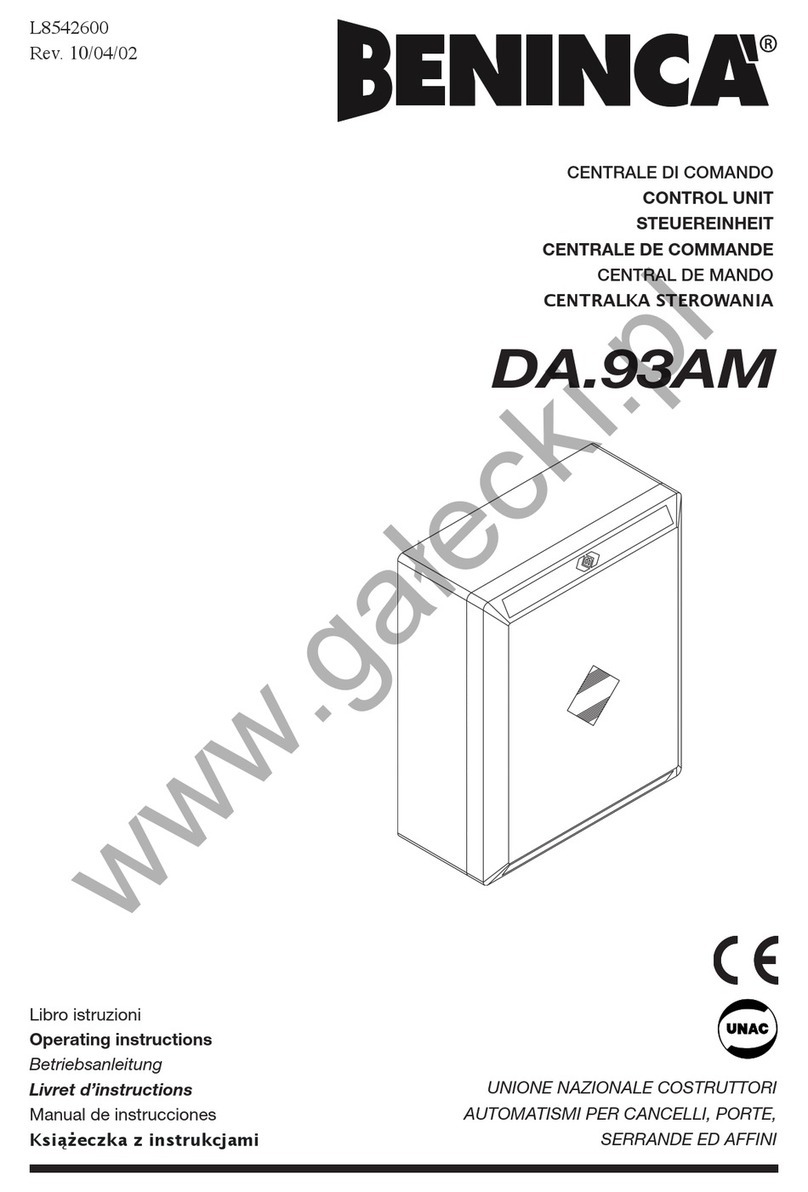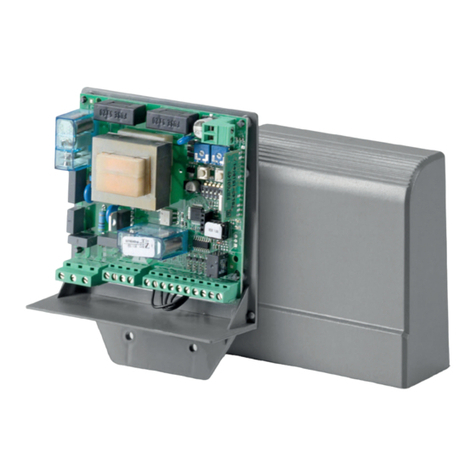
4
Connettore 20 pin
ABC
D
E
P1
P2 P3
Modo di
funzionam.
Prolung. tempi fissi
Selettore funzioni
Prolung. tempo di lavoro
Reg. tempo lavoro
1
1234
2
Reg. tempo pausa
Non usato
Funzioni della scheda logica
A Regolazione del tempo di lavoro: ruotando la vite del trimmer è possibile variare il tempo di lavoro da un
minimo di 1 secondo (vite completamente ruotata in senso antiorario) ad un massimo di 40 secondi (vite
completamente ruotata in senso orario).
B Regolazione del tempo di pausa: ruotando la vite del trimmer è possibile variare il tempo di pausa da un
minimo di 1 secondo (vite completamente ruotata in senso antiorario) ad un massimo di 100 secondi (vite
completamente ruotata in senso orario). La regolazione va fatta con la funzione Richiusura automatica
inserita (Dip-switch 3 del selettore funzioni in posizione ON).
CNon usato.
D Dip-switch 1 non usato: lasciare il Dip-switch 1 in posizione OFF.
Esclusione di inversione di marcia (funzione condominiale).
Dip-switch 2 in posizione Off disabilita il comando Passo-Passo durante la fase di apertura.
Richiusura automatica.
Dip-switch 3 in posizione On abilita la richiusura automatica dopo il tempo regolato dal trimmer B.
Selezione intervento fotocellule.
Dip-switch 4 in posizione On le fotocellule intervengono anche in fase di apertura, fermando il cancello
finchè l’ostacolo non viene rimosso. In posizione Off le fotocellule agiscono solo in chiusura; il loro interven-
to provoca l’inversione di marcia.
E Modo di funzionamento automatico.
Dip-switch 1 On - Dip-switch 2 On. Un impulso di passo-passo o di apertura da inizio al ciclo di apertura che
prosegue fino all’intervento del finecorsa o fino al termine del tempo di lavoro impostato. Durante il ciclo di
apertura non è possibile invertire il moto con il pulsante di chiusura, ma solo con il passo-passo se abilitato.
Per il ciclo di chiusura si ha un funzionamento analogo. Se è necessario invertire il moto dalla pulsantiera,
dare prima un impulso di Stop e dare poi il comando inverso oppure bisogna attendere l’intervento dei
finecorsa o la fine del tempo di lavoro.
Modo di funzionamento manuale.
Dip-switch 1 Off - Dip-switch 2 Off. Il cancello effettua la manovra di apertura o chiusura solo se si mantiene
premuto il relativo pulsante. Rilasciando il pulsante il cancello si ferma così come per l’intervento dei finecorsa
o alla fine del tempo di lavoro, a pulsante premuto.
L’arresto del cancello si ha anche all’intervento della fotocellula o della costa fissa. Se la fotocellula inter-
viene durante la chiusura, dopo l’arresto del cancello è possibile: A) rilasciare il pulsante di chiusura e
premere quello di apertura; B) rilasciare il pulsante di chiusura, premere lo Stop e premere uno dei pulsanti
di apertura o chiusura; C) attendere la fine del tempo di lavoro e premere uno dei pulsanti di apertura o
chiusura. Durante la manovra manuale con pulsanti, un impulso dal radiocomando (o dal pulsante passo-
passo) arresta il cancello: procedere in uno dei modi A), B) o C).
Modo di funzionamento semiautomatico.
Dip-switch 1 Off - Dip-switch 2 On. In apertura il funzionamento è automatico, in chiusura è manuale.
Dip-switch 1 On - Dip-switch 2 Off. In chiusura il funzionamento è automatico, in apertura è manuale.
P3 Prolungamento del tempo di lavoro: tagliando il ponticello P3 si prolunga il tempo di lavoro; la regolazione
con il trimmer A va da un minimo di 40 ad un massimo di 80 secondi.
P2 Prolungamento del tempo di frenatura, del prelampeggio e dell’elettroserratura: tagliare il ponticello
P2 per prolungare questi tempi fissi da 1.5 a 2 secondi.
P1 Tagliare il ponticello P1 se, dopo aver tagliato il ponticello P2, l’elettroserratura resta in funzione troppo a
lungo.
